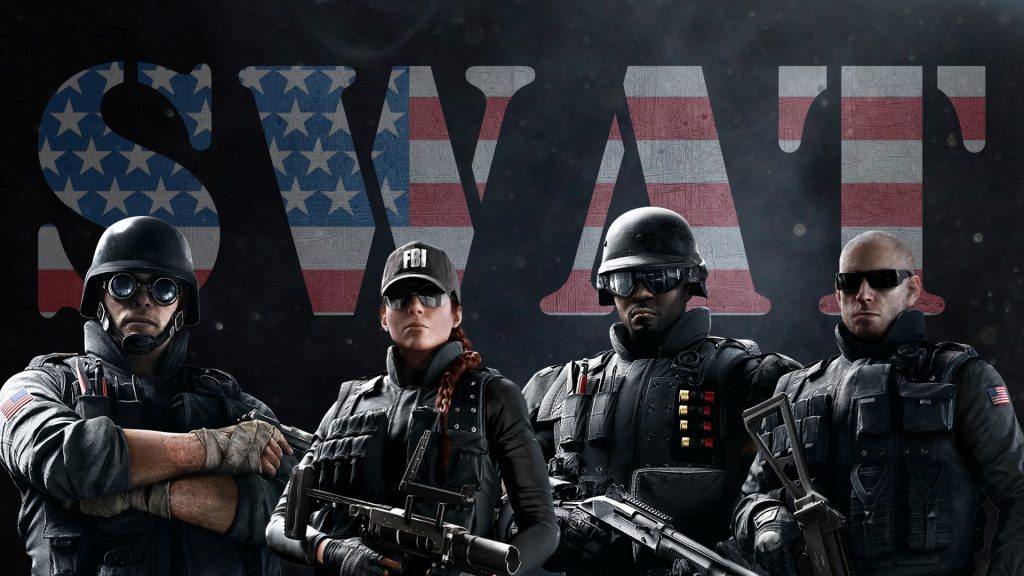SWAT are units in US law enforcement that use military-style light weapons and special tactics in high-risk operations that require abilities and skills beyond those of conventional police officers. This is an elite division, where only the best of the best professionals are selected. To become a member of the squad, you need to prepare a usajobs resume in accordance with the rules for filing an application in the federal sector, go through a rigorous selection and pass the relevant military standards successfully in order to prove your right to participate in the selection.
The concept of creating special forces originated in the United States in 1960 after riots swept across the country caused by anti-government forces. Subsequently, snipers began to hunt for police officers, which entailed a response from the Los Angeles police. It was in this city that the first SWAT squad was created.
Initially, this special unit did not have an organizational structure and included ordinary police officers with special training. In addition to their participation in SWAT, they carried out their normal daily tasks. This organization was bad for the unit. Subsequently, the SWAT squad became a separate unit with a permanent composition, not distracted by the usual police tasks, and was assigned to the city police. Currently, SWAT regional offices operate in all major cities in the United States, successfully fulfilling their tasks in the fight against crime and terrorism.
SWAT Objectives:
- Rescue of hostages;
- providing a security perimeter against snipers during visits by government officials;
- Providing superior firepower in some situations, including against barricaded suspects;
- Rescue of policemen and civilians who came under fire;
- Counterterrorism operations in US cities;
- Resolving high risk situations with a minimum of death, injury and property damage;
- Resolving situations with barricaded individuals (for this purpose, the Hostage Barricade Team has been specially created);
- Stabilization of high risk suicide situations;
- Providing support during raids against the drug mafia, arrests by court warrant, searches of suspects;
- Providing support for special events;
- Stabilization of dangerous situations when faced with criminals (such as racists, serial killers, gangsters);
- Fighting street riots.

Organization
As a rule, SWAT officers usually carry out day-to-day duty like other police officers, but they can be assembled at any time by making calls to pagers, mobile phones or radios. Even in large police departments such as the Los Angeles Police Department (LAPD), SWAT personnel are commonly used as crime suppressors, they may be more prepared and dangerous than a regular police patrol, but they do not carry their distinctive protection with them on normal duty. and weapons.
The Emergency Service Unit of the New York City Police Department is one of several civilian police units that operate autonomously 24 hours a day. However, this squad often performs a wide range of activities, including search and search and recovery of vehicles, which are usually performed by the police department or other services.
The need to gather personnel scattered over a wide area, then equip and instruct them, creates a long period of time between raising the alarm and deploying the SWAT squad.
SWAT police are recruited from volunteers from their own law enforcement organizations. Depending on the policy pursued by the department, candidates must serve a minimum term in the ranks of the department.
Only then will candidates be deemed eligible for special departments such as SWAT. This tenure requirement is based on the fact that SWAT officers are still law enforcement officers and must be thoroughly familiar with department policies and police procedures.
Equipment
SWAT team gear is designed for a variety of special situations, including close combat in urban environments. The types of equipment vary from unit to unit, but in general there are constant trends.
With all the wide variety of weapons used by SWAT teams, the most commonly used submachine guns, assault rifles, shotguns and sniper rifles. Tactical aids include police dogs, flash bangs, and tear gas grenades.
The most popular holster weapons are the M1911, Sig Sauer (especially the SIG-Sauer P226 and Sig P229), Beretta 92, Glock, HK USP semi-automatic pistols, and the 5.7 × 28mm (increased armor-piercing) FN Five-seven pistol.
The most popular submachine guns are the 9mm and 10mm Heckler & Koch MP5, Heckler & Koch UMP, and the 5.7x28mm FN P90.
The most popular shotguns are Benelli M1, Benelli M1014, Remington 870 and 1100, Mossberg 500 and 590.
The most popular assault rifles are the Colt CAR-15 & M4 and the Heckler & Koch G36 & HK 416. Although SWAT teams have increased their accuracy in long-range combat, the compact size of the weapon is important as SWAT units often operate in close combat. If long-range weapons are needed, SWAT shooters use the Colt M16A2.
The most popular sniper rifles are the M14 and the Remington 700P SWAT uses a variety of bolt action rifles. For less stressful situations, sniper rifles of 0.50 caliber with sliding bolt are used.
SWAT fighters use H.R.M. tactical body armor as protection. Tactical Vest with protection class III-A (according to US standards), which is able to protect against bullets of light weapons (including shot), while the weight of the body armor remains within the normal range, in contrast to heavy army body armor with a higher protection class [source not specified 353 days.
For quick opening of doors (locks, hinges or destruction of the whole door frame), battering rams, shotguns with cracking charges, explosives can be used. SWAT teams also use non-lethal weapons: tasers, pepper spray cans, rubber-loaded shotguns, guns that shoot pepper balls (usually paintball weapons, but the balls are filled with pepper spray instead of paint), tear gas grenades, flash bangs. Ballistic shields are used for close combat (to cover the soldiers and reflect shots).
